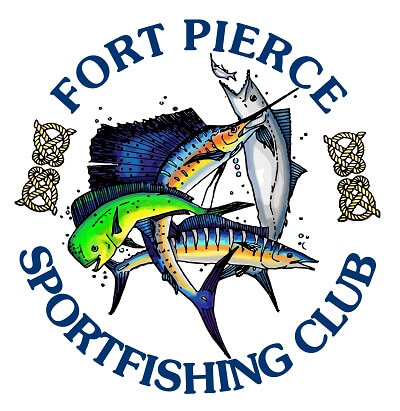Council Wraps Up Meeting Week by Approving Measures for Best Fishing Practices
by WebSuited | Oct 1, 2019 | Uncategorized
| Regulatory Amendment 29 would require descending devices;New Executive Director selected |
| September 23, 2019Members of the South Atlantic Fishery Management Council concluded their week-long meeting in Charleston, SC after approving federal fishery management measures intended to help implement best fishing practices and improve survivability of released fish. The measures, as included in Regulatory Amendment 29 to the Snapper Grouper Fishery Management Plan, would require fishermen fishing for snapper grouper species to have a descending device onboard and readily available for use when fishing in federal waters. The devices can be used to help reduce injuries caused by barotrauma, injury that occurs due to expansion of gas when fish are reeled up from deeper water. The condition may result in protruding stomachs from a fish’s mouth, enlarged eyes, and other conditions that keep fish from swimming back to depth. Descending devices are designed to help get the fish back down to deeper water and alleviate the symptoms. Both descending devices and venting tools, when properly used, can be used to treat barotrauma and significantly increase the likelihood that a released fish survives. |
| The amendment includes additional measures to modify existing requirements for the use of non-stainless-steel and circle hooks when fishing for snapper grouper species with natural baits to help reduce injury to released fish. A measure to standardize the use of powerhead gear by divers off the coast of South Carolina is also included. If approved by the Secretary of Commerce, regulations in Regulatory Amendment 29 may be implemented in 2020. |
| The Council had lengthy discussions about requiring the devices onboard and how to best define a descending device for regulatory purposes. “The intent is to encourage fishermen to use descending devices when necessary to help increase the likelihood that a fish pulled up rapidly from deep water survives,” said Council Vice Chair Mel Bel, representing the SC Department of Natural Resources Division of Marine Fisheries. “No one wants to see fish floating on the surface after being released. The purpose of the regulation isn’t to write tickets, but to reduce release mortality by providing fishermen with the understanding and tools needed to do so when they run offshore.” Council members continued to stress the importance of outreach and education for informing fishermen on the proper use of the devices. A Best Practices video tutorial is currently available from the Council’s website at: https://safmc.net/electronic-reporting-projects/myfishcount/ (click the “Best Practices” tab) and additional outreach materials will be developed. The regulatory amendment also includes a research and monitoring plan that recommends NOAA Fisheries monitor the use of descending devices and continue research to determine their effectiveness in reducing discard mortality. The information may be used to evaluate improvements in the survival of released snapper grouper species in order to incorporate new discard mortality estimates into future stock assessments. |
| Other ItemsThe Council heard concerns from fishermen representing the commercial fishery for Spanish mackerel on the Outer Banks of NC and the charter industry from the Florida Keys. Fishermen spoke about the negative impacts of a recent closure of the commercial Spanish mackerel fishery in the Northern Zone (NC/SC line through NY). The Council reviewed a detailed “white paper” that provided analysis of effort in the fishery and discussed options to control effort as recommended by the Mackerel Cobia Advisory Panel. After listening to fishermen and reviewing the paper, Council members agreed to begin work on an amendment to revise accountability measures that would allow a stepdown to 500 pounds per trip once the Northern Zone quota is met, with the fishery closing once the total annual catch limit (recreational and commercial) is reached. The amendment will continue to be developed and information on upcoming public scoping and hearings distributed as it becomes available. Charter captains from the Florida Keys also expressed concerns about the dolphin fishery and its economic importance. The Council continues to work on a comprehensive amendment for the fishery. |
| New Executive DirectorThe Council announced today that John Carmichael, the current Deputy Executive Director for Science and Statistics at the South Atlantic Fishery Management Council has been selected to become its next Executive Director. Carmichael was selected to assume the position upon Executive Director Gregg Waugh’s retirement in December 2019. As the Deputy Director for Science, John currently manages the Council’s science activities such as the Scientific and Statistical Committee, stock assessments, and Citizen Science efforts. He has worked at the Council since 2003. Previous positions include serving as a stock assessment scientist with the NC Division of Marine Fisheries Commission; Fishery Management Plan Coordinator with the Atlantic States Marine Fisheries Commission; and a biologist with the Maryland Department of Natural Resources. “I am honored to be chosen by the Council to serve at the next Executive Director,” said Carmichael upon the announcement. “I look forward to continuing working with the Council, our constituents and partners to manage our fisheries.” Additional information about the September Council meeting, including a story map, committee reports and summary motions is available from the Council’s website at: https://safmc.net/safmc-meetings/council-meetings/. The next meeting of the South Atlantic Fishery Management Council is scheduled for December 2-6, 2019 in Wilmington, NC. |
